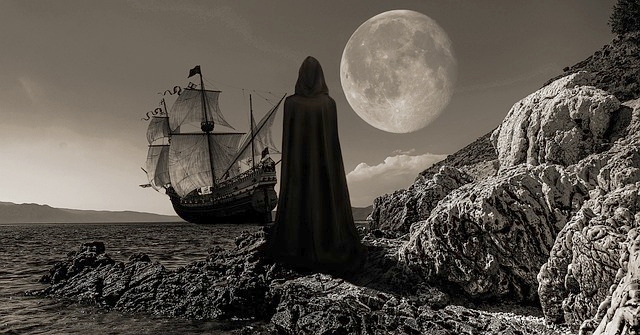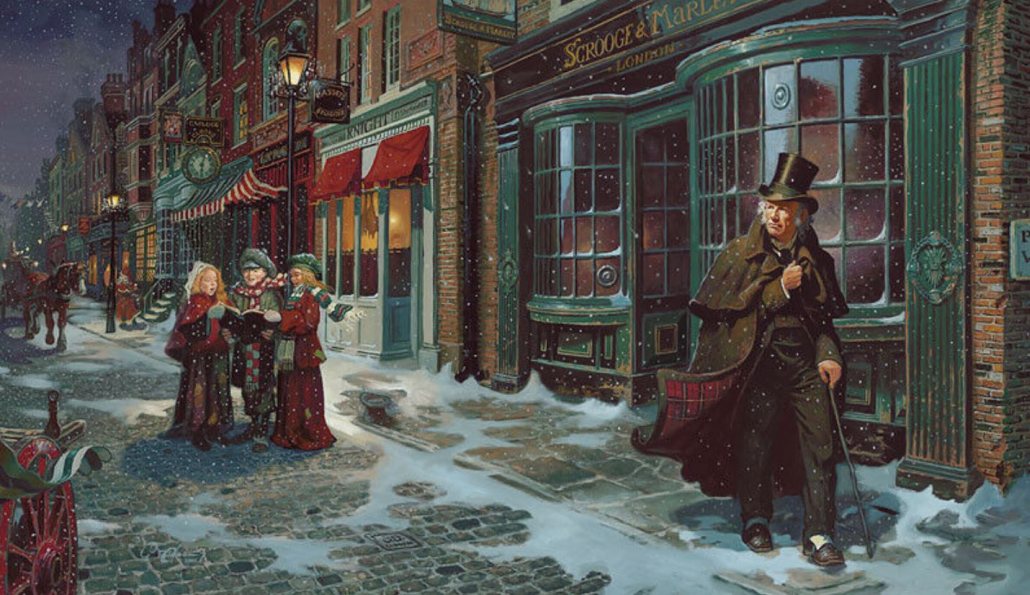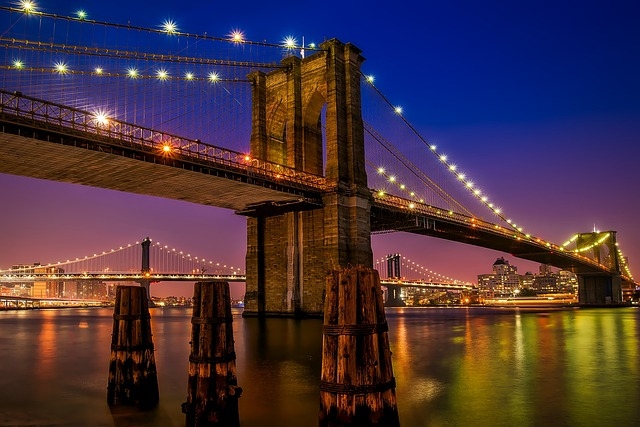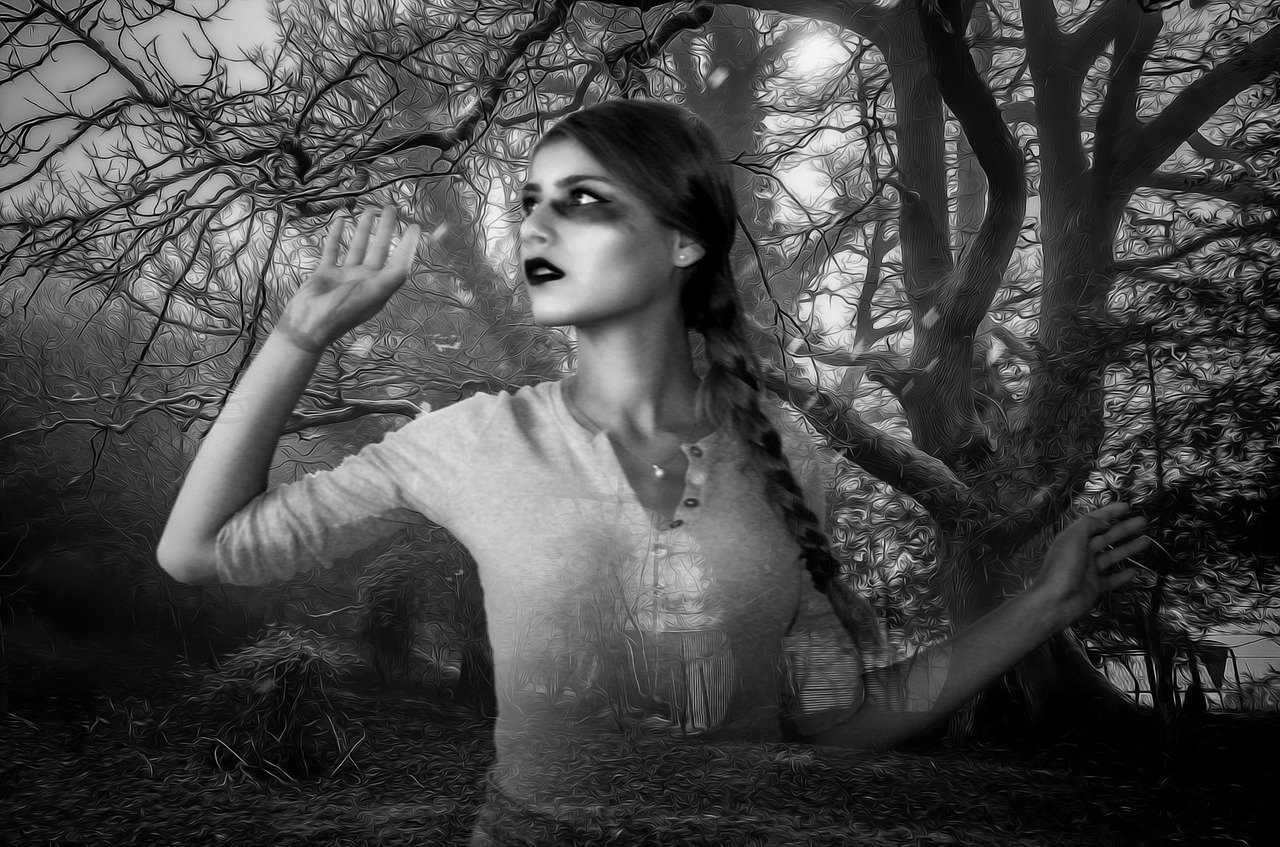
Ghost photographs have captivated the human imagination, offering tantalizing glimpses into the mysterious realm of the supernatural. These ethereal images, often shrouded in controversy and skepticism, continue to fascinate and intrigue us. In this article, we will delve into the stories behind some of the most famous ghost photographs ever taken, exploring their strange beauty and the mysteries they evoke.
The images purportedly capture glimpses of the supernatural realm, providing a visual connection to the afterlife. Ghost pictures often depict translucent figures, ethereal apparitions, or mysterious orbs, evoking a sense of mystery and wonder. They spark debates between skeptics and believers, with skeptics attributing them to various natural or photographic phenomena, while believers view them as evidence of spirits and paranormal activity. Regardless of one’s stance, ghost pictures continue to captivate our imagination, inviting us to contemplate the existence of a world beyond our own and the possibility that spirits may dwell among us. The following pictures are real. Here we have an outline of famous events. From the iconic Brown Lady of Raynham Hall to the haunting specter of Freddy Jackson, each photograph invites us to contemplate the existence of a world beyond our own.

The Brown Lady of Raynham Hall (1936)
Considered one of the most famous ghost photographs in history, the Brown Lady of Raynham Hall evokes a sense of eerie elegance. Captured in Norfolk, England, by photographers Captain Hubert C. Provand and Indre Shira, the photograph depicts a ghostly figure descending a staircase. Many believe this spectral apparition to be Lady Dorothy Walpole, who died in the 18th century. Despite rigorous scrutiny, no evidence of tampering has been found, leaving the Brown Lady photograph as an enigmatic testament to the supernatural. Among the pantheon of famous ghost photographs, one image has captured the imagination of believers and skeptics alike—the Brown Lady of Raynham Hall. Taken in 1936 by photographers Captain Hubert C. Provand and Indre Shira, this chilling photograph continues to bewilder and intrigue us. In this article, we delve into the story behind the Brown Lady, exploring the legends, investigations, and enduring mysteries surrounding this ethereal apparition.
The tale of the Brown Lady centers around Raynham Hall, a stately home in Norfolk, England. Legend has it that the ghostly figure captured in the photograph is none other than Lady Dorothy Walpole, the wife of Charles Townshend. Lady Dorothy, said to have been confined by her husband in the house, died under mysterious circumstances in the 18th century. Her restless spirit is believed to haunt the grand staircase of Raynham Hall.
Captured during a photoshoot for Country Life magazine, the Brown Lady photograph reveals a ghostly figure draped in a brown dress, descending the staircase with an ethereal glow. The eerie, yet elegant, presence of the apparition sent shockwaves through the world, igniting a fervor of curiosity and debate. Following the publication of the Brown Lady photograph, numerous investigations were undertaken to unravel the truth behind the image. Paranormal researchers, skeptics, and skeptics-turned-believers all sought to decipher whether it was a masterful hoax, an optical illusion, or genuine evidence of a haunting. Despite rigorous scrutiny, no evidence of tampering or trickery has been conclusively found, adding to the mystique surrounding the photograph.
The Brown Lady photograph gains further credibility through the testimonies of individuals who claim to have encountered the spirit firsthand. Over the years, various visitors to Raynham Hall have reported sightings of a spectral figure matching the description of the Brown Lady. These eerie encounters, combined with the photographic evidence, lend weight to the possibility of a haunting within the historic walls of the estate. Numerous theories have been put forth to explain the Brown Lady photograph. Some skeptics argue that it is a result of double exposure or a photographic anomaly. Others suggest that it could be a case of pareidolia, where the human brain perceives familiar patterns or shapes in random stimuli. However, proponents of the paranormal maintain that the image offers compelling evidence of a ghostly presence, pointing to the consistency between eyewitness accounts and the photograph.
The Brown Lady of Raynham Hall has become an iconic symbol of the paranormal. The image has permeated popular culture, featuring in books, documentaries, and discussions on supernatural phenomena. Its enduring popularity has spurred further investigations into Raynham Hall and inspired a sense of awe and curiosity surrounding the existence of ghosts and hauntings.
The Brown Lady of Raynham Hall continues to captivate our imagination, leaving us pondering the mysteries of the afterlife and the unexplained. Whether a spectral presence captured on film or an elaborate ruse, the photograph stands as a testament to the enduring fascination with the supernatural. The enigmatic image of the Brown Lady reminds us that there are still realms of existence beyond our comprehension, where apparitions roam the shadowy halls of history, waiting to be discovered.
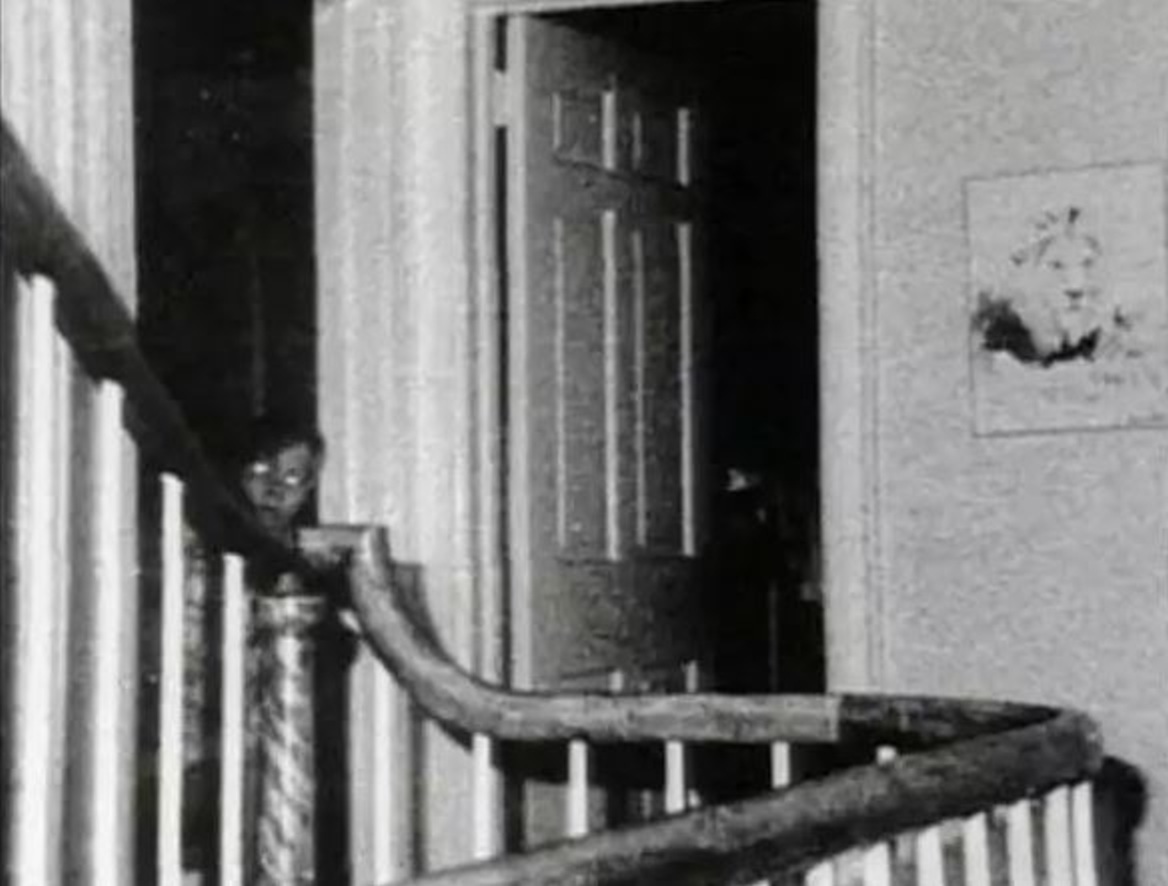
The Amityville Ghost Boy (1976)
The Amityville Ghost Boy photograph emerged during the notorious Amityville Horror case, which gripped the world with its tales of paranormal activity. Taken by Gene Campbell, the image captures a young boy’s ghostly visage peering from the second-floor landing. This haunting photograph adds a chilling layer to the already perplexing Amityville saga, leaving experts and enthusiasts divided. While some view it as a genuine ghostly presence, others question its authenticity. Regardless, the Amityville Ghost Boy photograph stands as a haunting reminder of the mysteries that lie beyond our understanding.
The Amityville Horror case gained international attention in the 1970s when the Lutz family claimed to have experienced terrifying supernatural phenomena in their newly purchased home on Ocean Avenue, Amityville, New York. The gruesome backstory involved a mass murder committed by Ronald DeFeo Jr., who had killed six members of his family in the same house just a year prior. During the investigation of the Amityville house, paranormal researcher Gene Campbell captured a series of photographs. It was only during the subsequent analysis that the image of the ghost was discovered. The photograph revealed a translucent figure of a young boy, peering out from the second-floor landing, as if observing the proceedings. The presence of the ghostly boy in the photograph added an extra layer of mystery to an already macabre case. The figure appeared solid and distinct, with discernible features and clothing. The image seemed to capture a brief moment where the realms of the living and the supernatural intersected. The photograph has not been immune to skepticism and controversy. Critics have questioned the authenticity of the image, suggesting it could be a product of manipulation, double exposure, or even a simple optical illusion. Skeptics argue that the photograph could be a deliberate attempt to capitalize on the Amityville Horror story.
What adds weight to the credibility of the photograph are the eyewitness accounts of individuals who visited the Amityville house during the investigation. Several people reported seeing and sensing the presence of a young boy in the home, matching the description of the figure captured in the photograph. These accounts provide a chilling corroboration of the ghostly apparition. The Amityville Ghost Boy photograph has had a profound psychological impact on those fascinated by the Amityville Horror case. It has fueled the belief in the existence of spirits and ghostly entities, shaping popular culture’s perception of paranormal phenomena. The photograph continues to be referenced in books, documentaries, and discussions, remaining an enduring symbol of the supernatural.
Decades after the photograph was taken, many questions remain unanswered. The true nature of the figure captured in the image, its origin, and its connection to the tragic events of the Amityville house continue to elude us. The photograph serves as a haunting reminder of the mysteries that surround the supernatural and our limited understanding of the realms beyond our own.
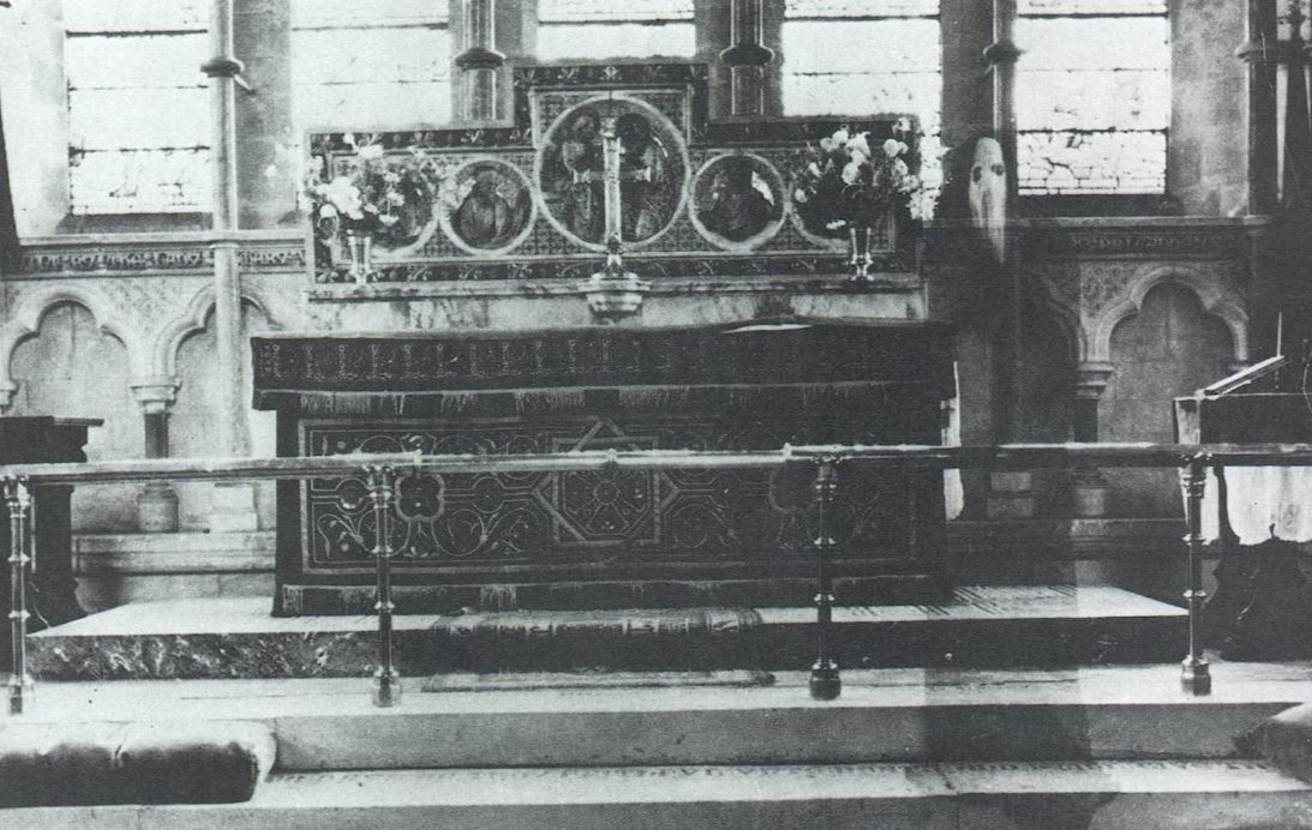
The Specter of Newby Church (1963)
Among the haunting images of the paranormal, the Specter of Newby Church photograph stands out as a chilling testament to the mysteries of the supernatural. Taken in 1963 by Reverend K.F. Lord at Newby Church in North Yorkshire, England, this photograph has puzzled experts and enthusiasts alike. In this article, we embark on a journey to explore the eerie history, the forensic analysis, and the lingering enigma behind the Specter of Newby Church.
Newby Church, a quaint place of worship dating back to the 19th century, sets the stage for this spectral encounter. With its serene ambiance and gothic architecture, the church has long been associated with stories of hauntings and unexplained phenomena, creating an atmospheric backdrop for the photograph. Reverend K.F. Lord, while taking photographs of the interior of Newby Church, unintentionally captured an unsettling presence. Upon developing the images, he was astounded to find a tall, menacing figure lurking in the corner of the church. The photograph revealed a spectral entity unlike anything he had witnessed before.
The Specter of Newby Church photograph portrays a looming figure with distorted features, clad in what appears to be a monk-like robe. Its hollowed eyes and unnatural posture exude an unsettling aura of malevolence. The apparition’s presence challenges our understanding of the spiritual realm and raises questions about the nature of the supernatural.Intrigued by the photograph, experts and skeptics subjected the image to meticulous scrutiny. Forensic analysis revealed no signs of tampering or double exposure, lending credibility to the authenticity of the photograph. Numerous photography experts and paranormal investigators studied the image, offering a range of theories, from a genuine ghostly presence to an elaborate hoax perpetuated by skilled manipulation.
The shocking photograph has sparked intense debates and speculation within the paranormal community. Skeptics argue that the image could be a result of light anomalies, pareidolia (the tendency to perceive familiar patterns in random stimuli), or photographic artifacts. Believers, on the other hand, find the image compelling evidence of a spiritual manifestation, pointing to its consistency with reported sightings of ghostly figures in and around the church. The origins of the Specter of Newby Church remain shrouded in mystery. Some theories suggest that the apparition represents a malevolent force associated with the church’s history. Others propose a connection to the nearby ruins of Jervaulx Abbey, which have their own tales of hauntings. These interpretations add an additional layer of intrigue to the photograph, fueling the fascination surrounding the Specter of Newby Church.
The Specter of Newby Church photograph has left an indelible mark on paranormal enthusiasts and has become an icon within the realm of ghost photography. It continues to capture the public’s imagination, inspiring discussions, artistic interpretations, and further investigations into the supernatural. The enduring mystery surrounding the photograph serves as a reminder that some phenomena may forever elude explanation.

The Tulip Staircase Ghost (1966)
Reverend Ralph Hardy’s ghost photographs, captured at the National Maritime Museum in Greenwich, London, stands as one of the earliest instances of a ghostly image. The picture portrays a translucent figure ascending the grand Tulip Staircase. While some experts argue in favor of its authenticity, attributing it to a genuine spiritual manifestation, others suggest optical illusions or double exposure. The debate surrounding the Tulip Staircase Ghost photographs continues to intrigue, reminding us of the delicate line between the known and the inexplicable.
The Tulip Staircase, an architectural marvel within the National Maritime Museum, serves as the backdrop for this otherworldly encounter. The exquisite spiral staircase, adorned with intricate ironwork and tulip-shaped banisters, exudes a sense of elegance and charm. Its historical significance and ghostly reputation set the stage for the photograph’s mysterious subject. While visiting the National Maritime Museum, Reverend Ralph Hardy captured a seemingly ordinary photograph of the staircase. It was only upon developing the image that he made a startling discovery—a translucent figure seemingly ascending the near the stairs, shrouded in a spectral glow. The ethereal presence within the frame astounded Hardy and piqued the curiosity of paranormal enthusiasts worldwide.
Photographic experts and investigators subjected the shocking photograph to rigorous scrutiny. Forensic analysis revealed no signs of tampering or double exposure, adding credibility to the photograph’s authenticity. Specialists examined light conditions, angles, and other technical aspects to decipher the nature of the apparition. Despite their efforts, no definitive explanation emerged, leaving the image open to interpretation. The Tulip Staircase Ghost photograph showcases a semi-transparent figure, seemingly dressed in period clothing, ascending the staircase. The figure’s ethereal, mist-like appearance contrasts with the solidity of the surrounding structure. The image’s composition and clarity lend an air of legitimacy, fueling speculation about its supernatural origins.
Various theories have emerged in attempts to explain the haunting being. Skeptics propose the possibility of a chance occurrence—a trick of light or an artifact of the development process. Others speculate that the image captures a residual energy imprint, a glimpse into a parallel dimension, or even a genuine ghostly presence lingering within the museum’s walls. The photograph’s enduring ambiguity continues to stir debate among experts and enthusiasts. The photograph finds resonance in the historical lore surrounding the National Maritime Museum. Over the years, numerous witnesses claim to have encountered unexplained phenomena within the museum, including sightings of ghostly figures and eerie footsteps echoing through empty halls. These accounts add an intriguing layer of credibility to the Tulip Staircase Ghost and suggest a longstanding haunting within the location.
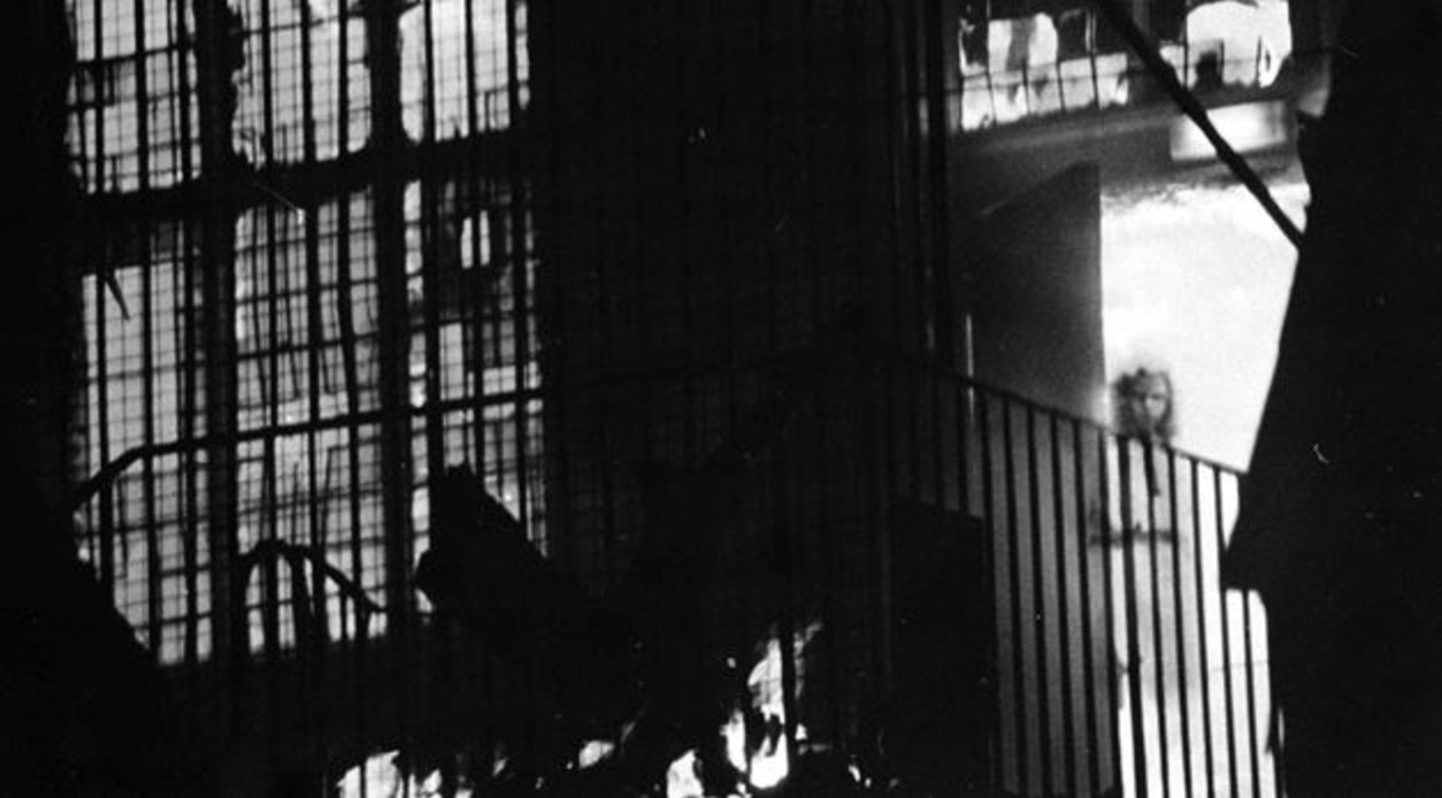
The Wem Town Hall Ghost (1995)
Amidst the chaos of a fire that consumed the Wem Town Hall in Shropshire, England, Tony O’Rahilly captured a photograph that sent shivers down spines. The image reveals a young girl standing untouched not far from raging flames. Speculation arose, linking the ghostly figure to a tragic fire that occurred at the same location centuries ago in 1677. While skeptics attribute the photograph to a chance occurrence, the Wem Town Hall Ghost photograph leaves room for wonder, challenging us to contemplate the boundaries of the physical and the spiritual.
The backdrop of the eerie ghost photographs is the tragic fire that engulfed the historic building on that fateful day in 1995. The fire devastated the town hall, reducing it to smoldering ruins and leaving the community in shock. Amidst the chaos and destruction, Tony O’Rahilly inadvertently captured an eerie presence that added a chilling layer to the already tragic event. O’Rahilly, a local resident and amateur photographer, took numerous photographs at the seen, documenting the unfolding disaster. It was only during the subsequent development of the images that he discovered the presence of an unexplainable figure standing calmly amidst the raging flames. The apparition appeared untouched by the fire, an ethereal anomaly in the midst of destruction.
The ghost photographs reveal the distinct figure of a young girl dressed in what appears to be period clothing. Her ghostly form stands in sharp contrast to the chaotic backdrop of the blazing building. The clarity and detail of the image lend an air of authenticity and have fascinated paranormal enthusiasts for decades. Eyewitnesses at the scene of the Wem Town Hall fire reported seeing a young girl resembling the figure captured in the photograph. Some claimed to have witnessed her standing near the burning building, while others recall a girl matching her description in the vicinity during the event. These testimonies corroborate the presence of the apparition, further fueling speculation about its origins.
The haunting nature of the Wem Town Hall Ghost photographs resonates deeply with the community and the wider public. Her presence evokes a sense of tragedy and loss, inviting contemplation about the boundaries of life and death. The image has been interpreted as a lingering spirit, a guardian angel, or a poignant reminder of the past’s enduring presence.
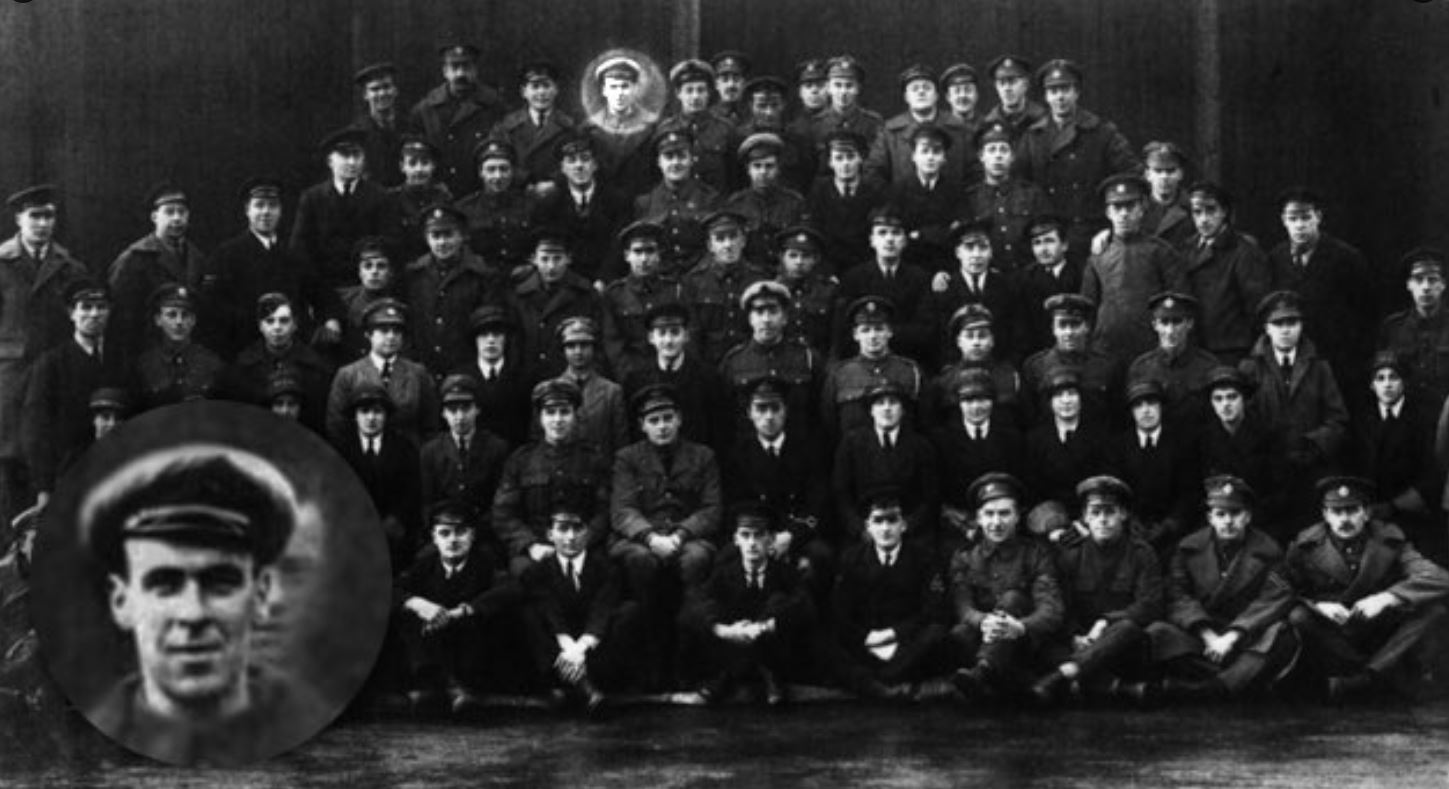
The Freddy Jackson Ghost (1919)
World War I brought forth stories of tragedy and inexplicable occurrences. The eerie ghost photographs, taken in 1919, became a haunting reminder of the perils faced by soldiers. The image features the spectral face of Freddy Jackson, a deceased member of Sir Victor Goddard’s squadron, appearing among his living comrades. This eerie photograph, taken on the day of Jackson’s funeral, serves as a powerful reminder of the enduring connection between the living and the departed.
The Freddy Jackson Ghost photographs emerged from the tragic events of World War I, a period marked by profound loss and unexplained phenomena. During this time, many soldiers experienced encounters with the supernatural, leading to a growing belief in the existence of ghosts on the battlefield. The photograph was taken in 1919 by Sir Victor Goddard, who commanded the squadron to which Freddy Jackson belonged. The picture was captured on the day of Jackson’s funeral, unbeknownst to those present. It was only during the development process that the presence of an additional figure, believed to be Freddy Jackson, was discovered.
The ghost photographs depicts a group of servicemen posing for a portrait. Standing behind one of the men is the ethereal figure of a face, resembling Freddy Jackson. The ghostly presence appears solid and lifelike, its eyes hauntingly staring into the camera, despite Jackson having passed away days earlier. The credibility of the Freddy Jackson Ghost photograph is bolstered by the testimonies of those present during the photo session. Several individuals, including fellow servicemen, confirmed that the figure resembled Freddy Jackson, who had recently died in a tragic accident. The unexpected appearance of Jackson’s ghost in the photograph left witnesses astounded and unsettled.
The image has sparked various theories attempting to explain its eerie presence. Some skeptics argue that the figure could be a result of double exposure or a coincidental arrangement of light and shadow. However, believers perceive it as evidence of Freddy Jackson’s spirit lingering in the mortal realm, potentially attempting to communicate with his comrades. The event resonates deeply with spiritual beliefs and the notion that the deceased can remain connected to the living. It serves as a reminder of the enduring bond between comrades and the potential for departed souls to manifest in extraordinary circumstances. The image’s impact lies in its ability to provoke contemplation about the afterlife and the mysteries that transcend our understanding.
This picture has left an indelible mark on paranormal enthusiasts and those interested in the supernatural. It has become an iconic representation of wartime encounters with the supernatural. The image’s enduring fascination has inspired further investigations into ghostly phenomena and continues to captivate the imaginations of those drawn to the mysteries beyond the veil of death.
Ghost photographs hold a mesmerizing power over our collective imagination. From the enigmatic Brown Lady of Raynham Hall to the strange Freddy Jackson ghost, these images evoke a sense of mystery and wonder. While skepticism surrounds many of these photographs, they continue to provoke debate, inviting us to explore the boundaries of the seen and the unseen. Each one represents a spectral fragment, an ethereal window into the enigmatic world that lies beyond our comprehension.
